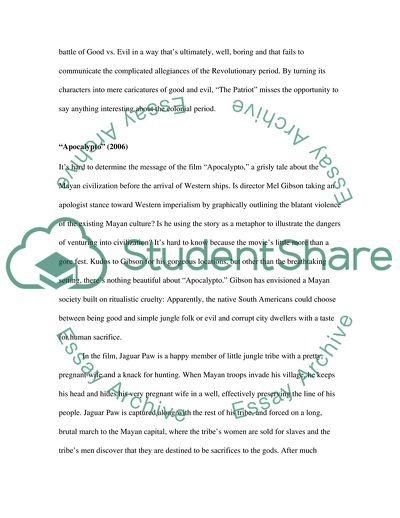Cite this document
(Analysis of Historical Movies Movie Review Example | Topics and Well Written Essays - 1500 words, n.d.)
Analysis of Historical Movies Movie Review Example | Topics and Well Written Essays - 1500 words. https://studentshare.org/visual-arts-film-studies/1730443-review-of-5-historical-movies
Analysis of Historical Movies Movie Review Example | Topics and Well Written Essays - 1500 words. https://studentshare.org/visual-arts-film-studies/1730443-review-of-5-historical-movies
(Analysis of Historical Movies Movie Review Example | Topics and Well Written Essays - 1500 Words)
Analysis of Historical Movies Movie Review Example | Topics and Well Written Essays - 1500 Words. https://studentshare.org/visual-arts-film-studies/1730443-review-of-5-historical-movies.
Analysis of Historical Movies Movie Review Example | Topics and Well Written Essays - 1500 Words. https://studentshare.org/visual-arts-film-studies/1730443-review-of-5-historical-movies.
“Analysis of Historical Movies Movie Review Example | Topics and Well Written Essays - 1500 Words”. https://studentshare.org/visual-arts-film-studies/1730443-review-of-5-historical-movies.


